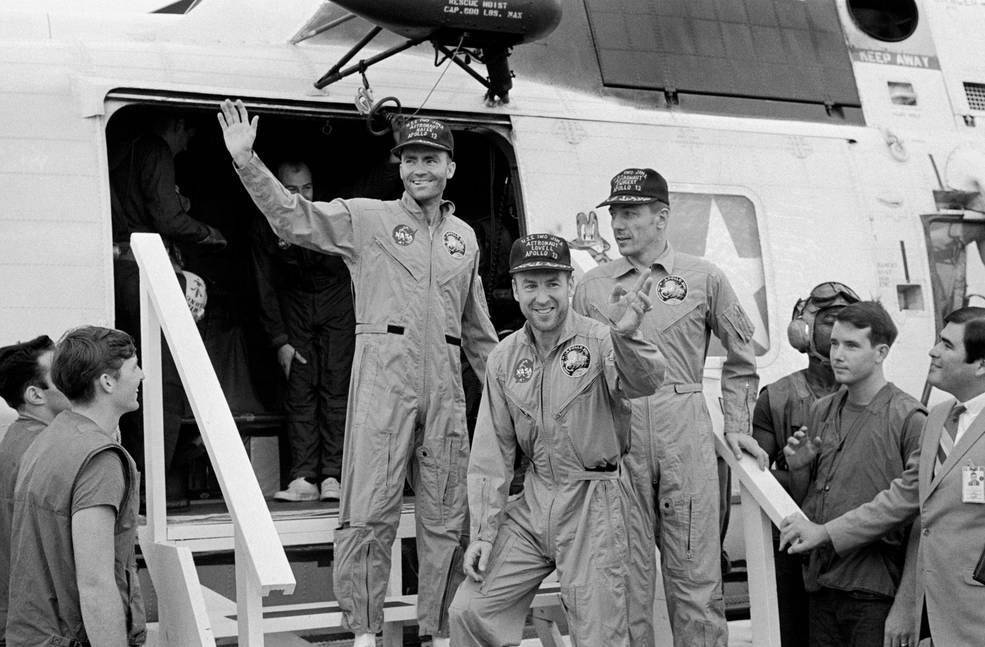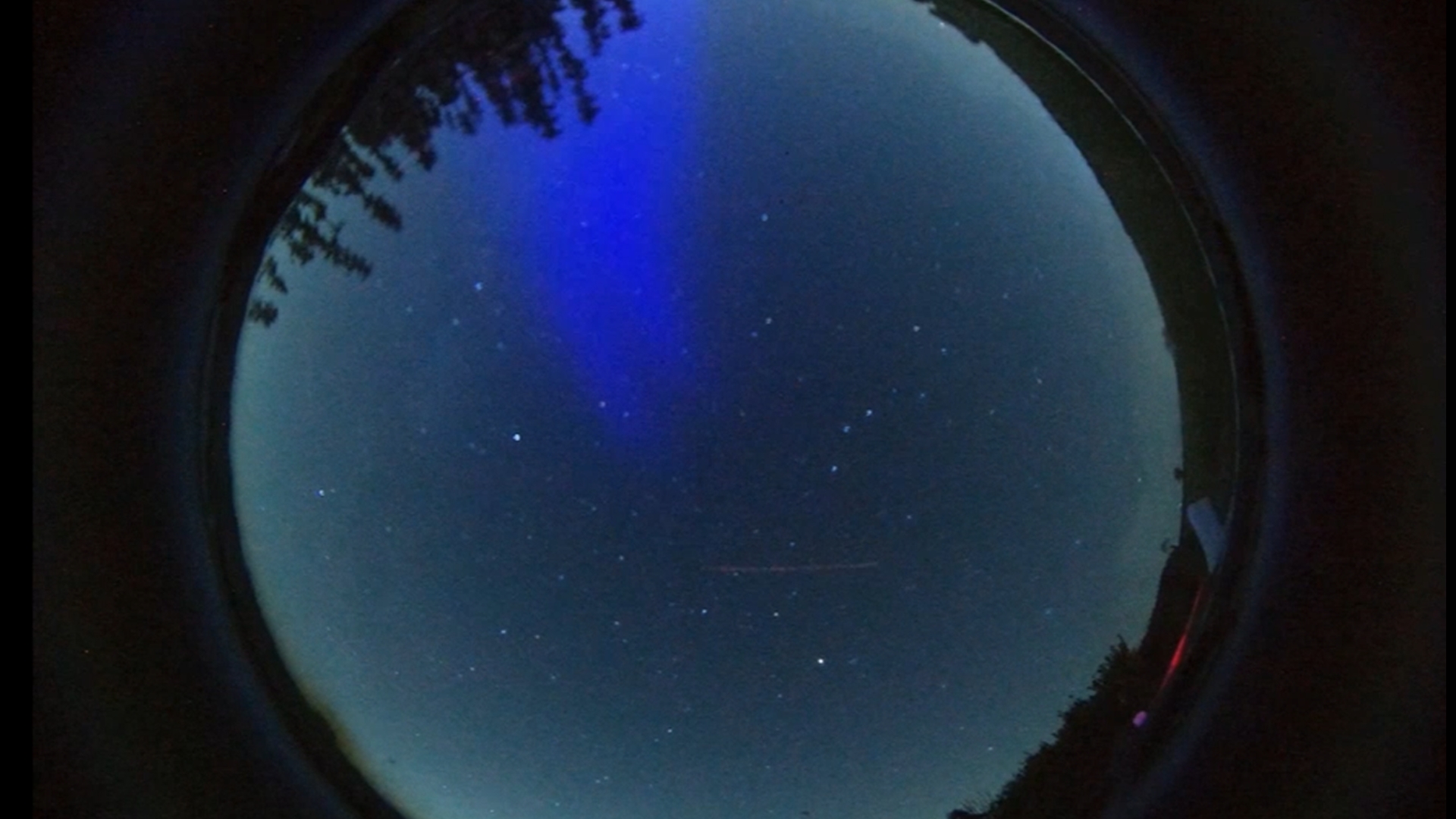Apollo 13 at 50: How NASA turned near-disaster at the moon into a 'successful failure' in space
While the crew never made it to the moon's surface, their very survival serves as a testament to the human spirit.
Fifty years ago today (April 11), three astronauts launched to space, poised to be the next humans to walk on the moon. But things didn't exactly go according to plan.
Famously described as a "successful failure," the Apollo 13 mission almost ended in complete and utter disaster. However, while the astronauts never made it to the moon's surface, their very survival serves as a testament to the human spirit and incredible ingenuity.
"Our goal 50 years ago was to save our valiant crew after sending them around the moon and return them safely to Earth," NASA Administrator Jim Bridenstine said in a statement. "Our goal now is to return to the moon to stay, in a sustainable way. We are working hard to ensure that we don't need to respond to this kind of emergency in Artemis, but to be ready to respond to any problems we don't anticipate."
(Artemis is NASA's current program of crewed lunar exploration, which aims to land the first woman and the next man on the moon in 2024.)
Related: See Apollo 13 as it happened with Apollo 13 in Real Time

At 2:13 p.m. EST (1813 GMT) on April 11, 1970, commander James "Jim" Lovell, command module pilot John "Jack" Swigert and lunar module pilot Fred Haise took off without a hitch from Launch Complex 39A at NASA's Kennedy Space Center in Florida. The astronauts were on their way to the moon. But about 56 hours into the mission, things went seriously awry.
The crew, who had just finished a television broadcast from aboard the command module, nicknamed Odyssey, noticed a slight drop in cabin pressure. Swigert went to see what was going on and check on the service module's oxygen tanks.
Get the Space.com Newsletter
Breaking space news, the latest updates on rocket launches, skywatching events and more!
The crew heard a loud bang coming from outside and Swigert uttered the famous line: "Okay Houston, we've had a problem here."
Apollo 13 timeline: The hectic days of NASA's 'successful failure' to the moon
Jack R. Lousma, the mission's communication link between the astronauts and flight controllers (the "CAPCOM"), asked the crew to repeat the transmission, and Lovell responded: "Uh, Houston, we've had a problem." (The phrase is often remembered as "Houston, we have a problem," but that line was just some movie magic from actor Tom Hanks, who played Lovell in the film "Apollo 13.")
It turned out that electrical shorts in the fan circuit in cryogenic oxygen tank 2 ignited wire insulation, causing the tank to heat up and become pressurized, eventually exploding. The tank explosion was so intense that it blasted off a chunk of the service module. As a result of this explosion, power and oxygen quickly started to drop and, all of a sudden, things were a matter of life or death.
Celebrate Apollo 13 at 50: Watch NASA's 'Home Safe' documentary and more

The possibility of a moon landing quickly fell out of focus as the astronauts and NASA ground crew had to immediately start brainstorming and working together to save the astronaut's lives. They decided to power down the crew module, as they would need to preserve it for re-entry, and they evacuated to the lunar module, nicknamed Aquarius, and used it as a "lifeboat" out in space.
They planned to travel around the far side of the moon and use the moon's orbit as a "slingshot" to help them get back to Earth. Mission Control was concerned that, if they were to instead just turn around and head straight back, their engine (they weren't sure how damaged it was) might not be able to make it.
But Aquarius was only meant to carry two astronauts down to the lunar surface and back, and now it was carting three grown men around the far side of the moon. This posed a number of issues as, not only were the astronauts cramped, they noticed that carbon dioxide levels were starting to rise in the air.
Lithium hydroxide canisters aboard both the lunar module and the command module were designed to "scrub" or remove carbon dioxide from the air. But the canisters on Aquarius couldn't handle the extra carbon dioxide from a third passenger. The crew acted quickly, grabbing other canisters from the command module, but those canisters were a different shape and didn't quite fit into the air filtration system aboard Aquarius.
But the crew needed to make it work, so they used things including spacesuit hoses, plastic bags and duct tape. Eventually, they got the canisters from the command module to fit in Aquarius. And, voila: a do-it-yourself air filtration system.
About an hour before they reentered Earth's atmosphere, the team jettisoned the lunar module, saying goodbye to the capsule that kept them alive during their unbelievable journey around the moon.
After bidding adieu to Aquarius, the crew buckled into Odyssey and prepared for an intense re-entry and descent. Ionized air around the module created a complete communication blackout for over four minutes as the craft was descending. NASA still thought that there could be an issue with the craft's parachutes or shields and was anxiously waiting to hear from the astronauts.
So, when the crew finally re-established contact with NASA and let them know that they'd splashed down safely and successfully in the Pacific Ocean on April 17, everyone breathed a heavy sigh of relief.
- Apollo 13 50th anniversary exhibit to launch new space rental service
- Failure was not an option: NASA's Apollo 13 mission of survival in pictures
- Committee waves off landing Apollo lunar module on new $1 coin
Follow Chelsea Gohd on Twitter @chelsea_gohd. Follow us on Twitter @Spacedotcom and on Facebook.
OFFER: Save 45% on 'All About Space' 'How it Works' and 'All About History'!
For a limited time, you can take out a digital subscription to any of our best-selling science magazines for just $2.38 per month, or 45% off the standard price for the first three months.
Join our Space Forums to keep talking space on the latest missions, night sky and more! And if you have a news tip, correction or comment, let us know at: community@space.com.

Chelsea “Foxanne” Gohd joined Space.com in 2018 and is now a Senior Writer, writing about everything from climate change to planetary science and human spaceflight in both articles and on-camera in videos. With a degree in Public Health and biological sciences, Chelsea has written and worked for institutions including the American Museum of Natural History, Scientific American, Discover Magazine Blog, Astronomy Magazine and Live Science. When not writing, editing or filming something space-y, Chelsea "Foxanne" Gohd is writing music and performing as Foxanne, even launching a song to space in 2021 with Inspiration4. You can follow her on Twitter @chelsea_gohd and @foxannemusic.
-
ForewardObserver In July 1969 I was aboard a MAC flight (Northwest Orient), flying from Hawaii via Tokyo to Saigon. All of the passengers were military troops enroute to their tour of duty in the unknown fog of the Vietnam war. After refueling our 707 aircraft at Wake Island, high again over the Pacific, the pilot announced, “Gentlemen, we have landed a man on the moon!” The aircraft erupted with applause, cheers, and whistles. A few moments later complete silence, as if the irony of our final destination struck our collective consciousness.Reply

